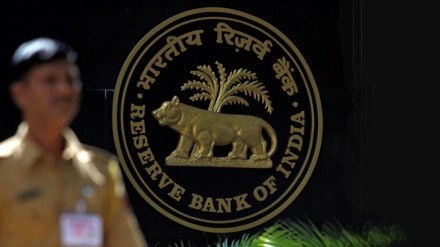While seeking feedback on whether to continue with the 4% headline target, the RBI has stressed that the existing framework has served India well. This signals that while open to refinements, it sees no need for a radical departure from its current strategy, explains Saumitra Bhaduri.
What is inflation targeting?
INFLATION TARGETING IS a modern monetary policy framework where a central bank publicly commits to achieving a specific annual inflation rate. The central bank then adjusts its main tool, the short-term interest rate, to steer inflation toward this target. This approach aims to anchor public inflation expectations, ensuring price stability, which, in turn, supports sustainable economic growth. It provides a clear compass for monetary policy. This approach, pioneered by countries such as New Zealand and Canada in the early 1990s, is now embraced by around 45 countries and the Eurozone.
As the Reserve Bank of India (RBI), approaches a crucial five-year review of its monetary policy framework, a public debate is heating up. The question on everyone’s mind: Has inflation targeting, which has been a cornerstone of India’s economic stability since its adoption in 2016, run its course? The RBI’s August 2025 discussion paper has sought feedback on whether to continue with the 4% headline target, or shift focus to core inflation, which excludes volatile food and fuel, or adjust the tolerance band.
Why is this considered a good policy?
FIRST, IT PROMOTES transparency and credibility. By setting a clear numerical target, a central bank’s actions become more predictable and accountable. This enhances the public’s trust in the central bank’s commitment to controlling inflation. Second, it helps in anchoring expectations. When businesses, investors, and households believe that inflation will remain stable and predictable, they can plan for the future with greater certainty, which reduces economic volatility and supports long-term planning. Last, it offers flexible discretion. Most modern frameworks, often called “flexible inflation targeting,” or FIT, allow central banks to respond to economic shocks—such as a recession—by balancing the primary goal of price stability with other concerns like economic growth and employment. This allows for a more nuanced and effective policy response.
India’s inflation story since 2016
INDIA ADOPTED THE FIT framework in 2016. The target was set at 4% headline Consumer Price Index (CPI Combined – rural + urban) inflation, with a tolerance band of ±2 percentage points (2–6%). The RBI’s Monetary Policy Committee is entrusted with the task of achieving this target, primarily by adjusting short-term interest rates. It has now initiated a discussion to revisit the CPI, which is currently based on the 2012 basket of goods and services. The CPI is considered to be outdated, as household consumption patterns have changed over the past decade. The proposed new CPI will update expenditure weights, include a wider range of services (such as telecom, digital payments, and healthcare), and better reflect rural-urban consumption differences.
Since 2016, India’s average inflation has been 4.9%, a big improvement from the 6.8% average earlier. The framework is credited for stabilising inflation and improving the effectiveness of monetary policy transmission.
The great food debate
THE RBI ARGUES headline inflation is more relevant to the average household’s cost of living since food and fuel are major expenses. It believes that targeting a measure people directly experience helps anchor inflation expectations and builds credibility.
The RBI also contends that persistent food and fuel price shocks can eventually spill over into other sectors, affecting core inflation through higher wages and transportation costs, making headline inflation a more comprehensive target. Critics argue that sudden shocks in these sectors, which are often beyond the central bank’s control, can push inflation outside the target band, potentially undermining the RBI’s credibility or forcing an overreaction in policy.
The RBI has, however, reaffirmed its belief that the existing framework has served India well through global challenges. This signals that while open to refinements, the central bank sees no need for a radical departure from its current successful strategy.
Global practices & the path forward
WHILE THE US Federal Reserve’s official long-run inflation target is 2%, it doesn’t specify which measure it uses. In practice, however, it primarily tracks the Personal Consumption Expenditures (PCE) price index. It pays close attention to both headline PCE and “core PCE” (excluding food and energy). The Bank of England and the European Central Bank follow a similar approach, focusing on headline CPI for their targets while constantly analysing core inflation to understand underlying trends.
As the RBI prepares for its next policy review, the feedback will help shape the future of India’s monetary policy. The final decision will balance the proven effectiveness of the current framework with the need for adaptability in a changing global economy. Whether the future involves a refined focus or a new approach, one thing is clear: inflation targeting will remain a central pillar of India’s economic management.
The writer is a professor at Madras School of Economics
